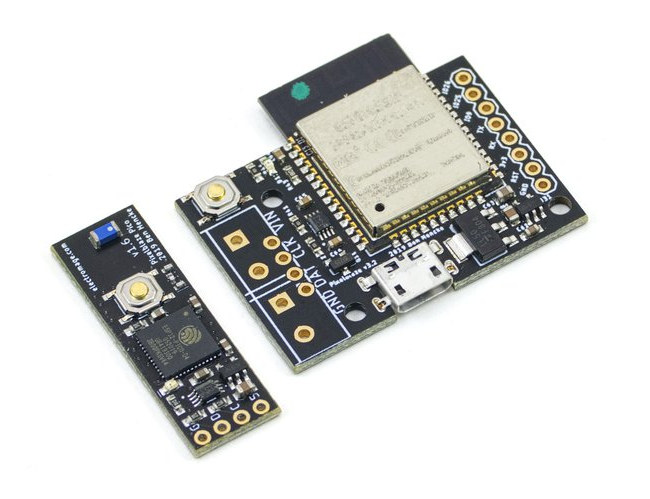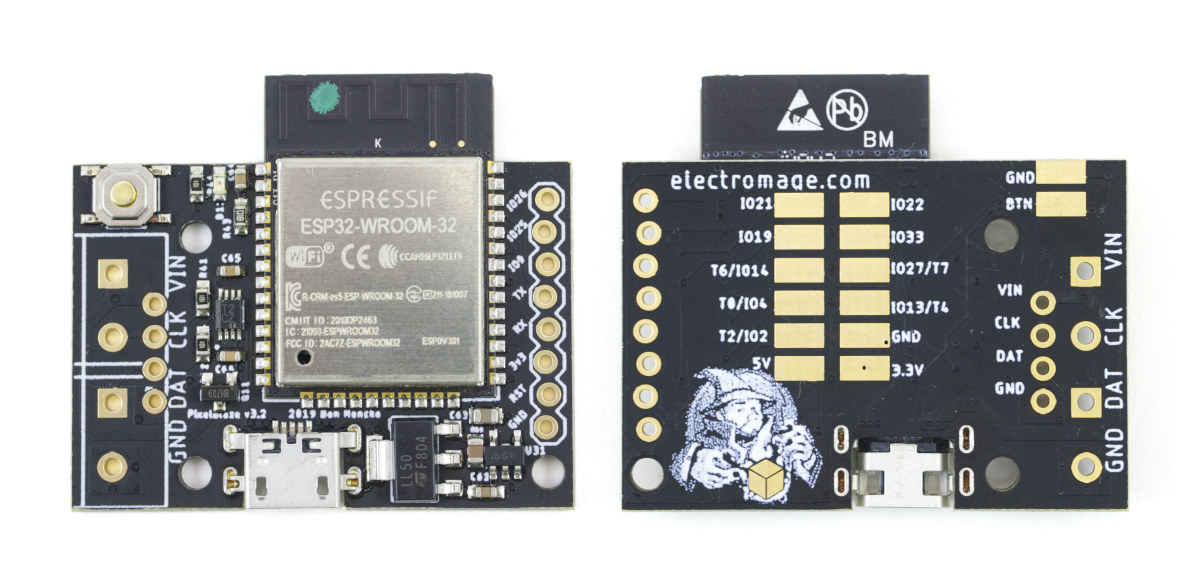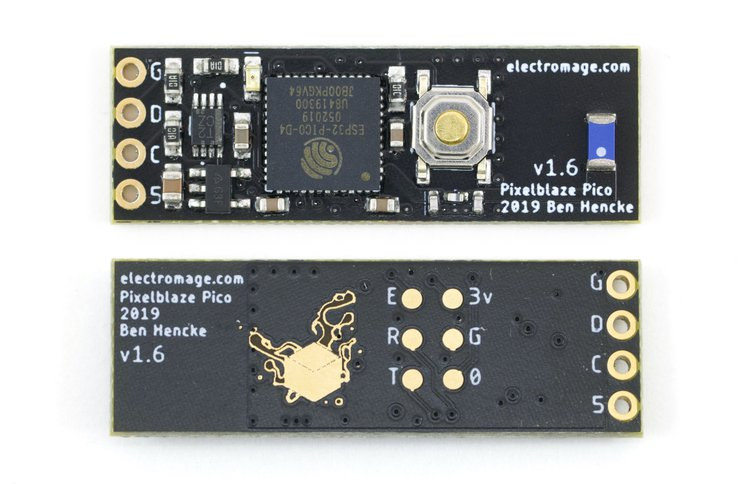We’ve previously covered a couple of ESP8266 WiFi boards to control LED strips from ANAVI Technology ESP8266 powered ANAVI Miracle Controller and ANAVI Light Controller Starter Kit, but Ben Henke has also made similar ESP8266 LED controllers with PixelBlaze boards.
The latest iteration – PixelBlaze v3 – is based on ESP32 WiSoC and comes in two variants: PixelBlaze v3 Standard with headers and PixelBlaze V3 Pico in a much tinier form factor (33.3 x 11mm) with both models supporting live-coding via a web interface.

PixelBlaze v3 specifications:
- Wireless SiP or module
- Standard – ESP32-WROOM-32 module with Espressif ESP32 dual-core processor @ 240 MHz with 4MB flash
- Pico – ESP32-PICO-D4 system-in-package with Espressif ESP32 dual-core processor @ 240 MHz with 4MB flash
- 4-pin header with VCC, GND, DATA, CLK for LED matrix or strip
- Compatible with APA102, SK9822, DotStar, WS2811, WS2812 (up to 2,500 LEDs), WS2813, WS2815, NeoPixel, and WS2801 actively driven at 5 V with 100 Ω resistors for long-distance signal wiring; also works with 12 V LEDs with a separate power supply
- Output can be connected directly to LEDs with support for any RGB color order and RGBW/GRBW
- Refresh rate adjustable between 250 kHz to 20 MHz for driving up to 5,000 APA102/WS2801 LEDs
- Expansion
- Standard
- 8-pin header with UART, 3x GPIO, and 3.3V/GND
- 12 pads for analog inputs, touch sensor inputs, 9x GPIO
- 8-pin header with UART, 3x GPIO, and 3.3V/GND
- Pico – 6x ix pads on the underside of the board with UART, IO0, GND, 3.3 V, for factory programming
- Standard
- Misc – User button, Status LED
- Power supply
- 5 V back-feed from the LED strip with an onboard 3.3 V regulator
- Reverse-polarity protection and up to 18 V overvoltage protection to prevent damage from common wiring mistakes
- Standard only – 1x micro USB port (1.8 A pass-through)
- Power consumption – 72-145 mA in client mode, 150-172 mA in AP mode
- Dimensions
- Standard – 39.5 x 34.2 mm including antenna
- Pico – 33.3 x 11 mm


Both boards have 1.4MB flash reserved for pattern storage with 100 patterns with previews, preloaded with dozens of patterns, and annotated examples. Each pattern supports 256 global variables, 256 stack variables (recursive functions supported), and 10,240 arrays/elements.
Ben Henke also offers a Sensor Board with a 3-axis accelerometer, an ambient light sensor, and 5 extra analog inputs, Output Expansion Board in order to simplify wiring and power distribution for several strips, panels, or strings of LEDs, as well as 8×8 LED Matrix to get started.
The board can be controlled from the web interface shown above to create patterns, select colors, and update them on the fly using JavaScript. You’ll find the API documentation on Github (see README.mapper/expressions files) together with EAGLE schematics and PCB layouts for both boards.
With the demo patterns, Pixelblaze V3 generates 48,000 pixels per second on average and can drive up to 5000 pixels. It’s also possible to combine multiple Pixelblaze controllers and synchronize them with Firestorm centralized control console that can run on a Raspberry Pi or other SBCs or computers.
PixelBlaze v3 has recently launched on Crowd Supply and raised over $10,000 in less than a week. Rewards start at $35 for Pixelblaze V3 Standard or Pico, and up to $132 with all boards listed above. Shipping is free to the US and will depend on weight to the rest of the world. Rewards are expected to start shipping in mid-February 2021.

Jean-Luc started CNX Software in 2010 as a part-time endeavor, before quitting his job as a software engineering manager, and starting to write daily news, and reviews full time later in 2011.
Support CNX Software! Donate via cryptocurrencies, become a Patron on Patreon, or purchase goods on Amazon or Aliexpress





